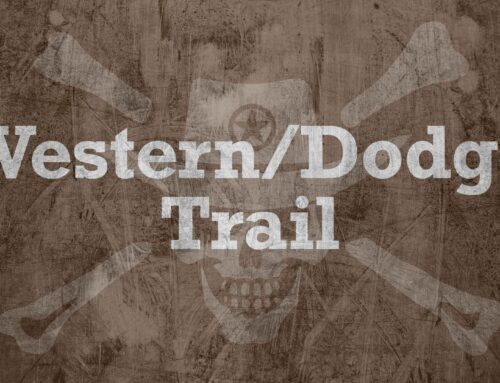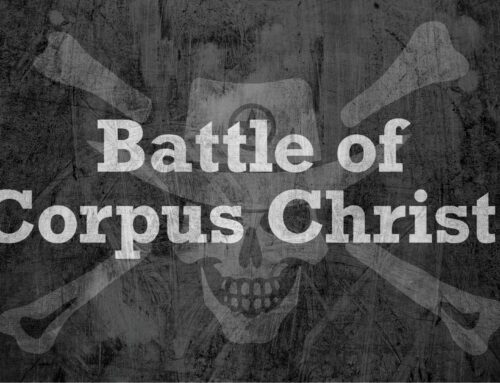The Dawson Massacre: A Tragic Episode in Texas History (September 18, 1842)
Introduction
The Dawson Massacre, which occurred on September 18, 1842, was a tragic episode in Texas history. This devastating event involved Texian forces being ambushed and killed by a superior Mexican force near San Antonio, Texas. The massacre highlighted the ongoing tensions and conflicts between the Republic of Texas and Mexico during the tumultuous period following Texas’ independence.
Background of the Massacre
Rising Tensions and Border Disputes
Following the Texas Revolution and the establishment of the Republic of Texas in 1836, tensions remained high between Texas and Mexico. Mexican forces frequently raided Texan settlements, creating a volatile and dangerous border region. The Mexican government’s refusal to recognize Texas’ independence further exacerbated hostilities.
Mexican Incursions and Texian Response
In 1842, Mexican General Adrián Woll led an incursion into Texas, capturing San Antonio on September 11. This bold move by the Mexican forces prompted a swift response from the Texian government and militia. Volunteers were called upon to defend Texas and repel the Mexican invaders, leading to the tragic events of the Dawson Massacre.
Preparations and Mobilization
Texian Forces and Leadership
Captain Nicholas M. Dawson, a veteran of the Texas Revolution, quickly assembled a company of 53 volunteers from La Grange, Texas, to join the Texian forces under Colonel Matthew Caldwell, who were already marching to confront General Woll. These men, motivated by a sense of duty and patriotism, set out to support the larger Texian force.
Mexican Forces and Strategy
General Woll’s Mexican forces were well-equipped and numbered around 1,600 men. His strategy involved securing and fortifying San Antonio while sending out patrols to intercept and defeat any approaching Texian reinforcements. The Mexican forces were confident in their ability to maintain control over the region and repel the Texian militia.
The Day of the Massacre: September 18, 1842
Texian Approach and Initial Contact
On September 18, 1842, Captain Dawson and his 53 volunteers reached the Salado Creek area near San Antonio. Unbeknownst to them, a significant Mexican cavalry force was patrolling the area. As Dawson’s men approached, they were ambushed by the Mexican troops.
The Ambush and Battle
The Mexican cavalry, numbering around 500, quickly surrounded Dawson’s smaller force. Despite being outnumbered, the Texians fought bravely, using the available cover and their superior marksmanship to inflict casualties on the Mexican soldiers. However, the overwhelming numbers of the Mexican cavalry soon took their toll.
The Massacre
After a brief but intense battle, most of Dawson’s men were killed. Only 15 Texians survived the initial engagement, with nine of them being wounded. The survivors, including the wounded, were captured and taken prisoner by the Mexican forces. Captain Dawson was among those killed in the fight.
The Aftermath of the Massacre
Texian Casualties and Captivity
The Dawson Massacre resulted in significant casualties for the Texians. Of the 53 volunteers, 36 were killed, 15 were taken prisoner, and two managed to escape. The captured Texians faced harsh treatment at the hands of the Mexican forces and were eventually marched to Perote Prison in Mexico, where they endured severe hardships.
Strategic Impact
The massacre had a profound impact on the Texian militia and the broader conflict between Texas and Mexico. The loss of Dawson’s company was a significant blow to the Texian forces, and the massacre underscored the dangers and challenges of defending the Texas frontier against superior Mexican forces.
Legacy and Commemoration
The Dawson Massacre is remembered as a tragic episode in Texas history. The bravery and sacrifice of Captain Dawson and his men are commemorated through historical markers, memorials, and educational programs. The massacre serves as a poignant reminder of the ongoing struggles faced by the Republic of Texas during its early years.
Legacy of the Dawson Massacre
Historical Significance
The Dawson Massacre holds a significant place in the history of Texas. It marked a tragic and costly encounter between Texian and Mexican forces, highlighting the ongoing conflict and instability in the region during the early years of the Republic of Texas.
Cultural Impact
The legacy of the Dawson Massacre is deeply ingrained in Texan culture. The courage and sacrifice of the Texian volunteers are remembered in folklore, literature, and popular culture. The massacre serves as a symbol of the struggles and hardships faced by early Texans in their fight for survival and independence.
Modern Reflections
Today, the Dawson Massacre is viewed with a sense of historical pride and reflection. It serves as a reminder of the challenges and sacrifices faced by the early settlers in their quest for security and stability. The massacre’s legacy is honored through education, preservation, and public commemoration.
Conclusion
The Dawson Massacre, which took place on September 18, 1842, was a tragic episode in Texas history. Despite their bravery and determination, Captain Dawson and his volunteers were overwhelmed by a superior Mexican force, resulting in significant Texian casualties. The events of the Dawson Massacre underscore the ongoing conflicts and challenges faced by the Republic of Texas during its early years.
By exploring the history and impact of the Dawson Massacre, we gain a deeper appreciation for the courage and resilience of those who fought to defend Texas. The story of this massacre highlights the importance of bravery, determination, and the enduring spirit of freedom that continues to define Texas.





